Folks who know me well know I love following sports of all kinds. From the American professional major league sports (especially football, baseball, soccer, golf, boxing, and to a far lesser extent these days, basketball), to college-level sports, to amateur sports, to obscure athletic pursuits (fencing, team handball, badminton, rugby, squash, lawn tennis, etc.), I can enjoy almost any athletic competition. Well, almost any--I am not a big fan of car racing (I've never been able to get into any of its categories or offshoots), curling, or synchronized swimming. Now that summer is approaching, here are some of my sports interest updates:
 MLB Baseball
MLB Baseball: My favorite team, the
St. Louis Cardinals, are leading their division (Central, NL), the biggest in baseball, by 7.0 games, and have won 4 straight. They've gotten solid pitching from their starters (4 have at least 5 wins, and two have 7) and excellent relief, and the sexy engine named
Albert Pujols (right) continues to power the team forward, with a batting average above .320, 11 home runs, and 39 runs batted in. These place him in the upper ranks of National League hitters, where he's been since he entered the majors four years ago. The Cards have also gotten production from veterans Jim Edmonds (who initially was a little off-pace this year) and Reggie Sanders, and from newcomers David Eckstein and Mark Grudzielanek. The biggest surprise has been catcher Yadier Molina, who stepped in as a rookie this year, and after a dismal spring, has been in a rave, raising his average to .250. The Cardinals have the talent to win the pennant again, though they've been playing .500-ish ball of late. The combo of new starter Mark Mulder (7-1, 3.72 ERA) and vet Chris Carpenter (7-2, 3.78 ERA), if his arm holds up, might allow them to avenge their humiliation last October at the hands of the Red Sux and win them the Series.

Yes, it's odd to have a second favorite team, but I have one in each league. In the AL, I root for the dreaded...
New York Yankees. It's been a two decades-long allegiance, beginning when leggy Hall of Famer
Dave Winfield, dubbed "Mr. May" by the Yankees' loudmouthed, Nixon-loving owner, joined the Bronx Bombers back in 1981. Every year Yankee fans expect the team not only to be competitive, but to dominate, and they started out this season as if they were all on ice--it was almost unbearable. They weren't really hitting (except
Derek Jeter), the starting pitching was awful, even though they'd gone out and gotten Randy Johnson, their closer was looking incredible vulnerable, and they just seemed to be playing as all the fizz of recent years had died and they'd flatlined. But then several weeks ago they went on a tear, winning 10 in a row and bringing themselves back from the dead. They're still 4.5 games behind the Orioles, who've occupied the AL East basement in recent years (after a storied period in the 1970s and early 1980s), but
A(donis)-Rod (pictured at left, AP) is hitting on all jets (his 17 home runs and 49 RBIs lead the league),
Gary Sheffield is also punching the ball around, the pitching has stabilized, and they have one of the best managers in baseball.
Totally amazing are the
White Sox, who've had occasional good seasons over the last 20 years but who traditionally are Chicago's second team (the first playing in that yuppie bandbox at Addison and Clark on the North side--you know, the cursed team, the goat, Bartman, etc.). This year they have the best record in baseball so far. They also have an adorable manager, Ozzie Guillén and some of the best starting pitching in either league, which they've shown can carry a team even bats are relatively silent.
Also fascinating are the
Detroit Tigers, who have the most African-American starters of any team, four (Dmitri Young, Craig Monroe, Rondell White, and Nook Logan) which is particularly noteworthy given the declining percentage of non-Latino Blacks on Major League rosters. Several teams, like Minnesota, Atlanta, Toronto, and the Chicago Cubs have 2-3 regular African-American starters, while others (Baltimore, Oakland, Houston, Arizona) have
none, a reality in 2005 that would have been inconceivable in 1995 or even 1965. There are even fewer African-American starting pitchers this season than at almost any other point in the last 30 years, though one of them,
Dontrelle Willis of the Florida Marlins, is proving himself one of the best, surpassing even his 14-6 rookie season. He's currently 8-1 with a 1.55 ERA, second only to future Hall of Famer Roger Clemens's Gibsonesque 1.19, and 50 Ks in 64 innings. The high-kicking, body-corkscrewing right hander has threw consecutive two shutouts to start the season. The other African-American starting pitcher, 6'7"
C.C. Sabathia of the Cleveland Indians has a 3-3 record, though he has thrown decently in his last few starts, and hit his first home run in an interleague game last week.
 Tennis
Tennis: I haven't watched one
French Open match so far this spring. Back in the 1970s when I was a little kid and was learning how to play tennis, it seemed like either Bjorn Borg or Chris Evert Lloyd won at Stade Roland Garros every year or at least every other year (Borg also won Wimbledon five straight times). Then in 1984,
Yannick Noah won, and I immediately began fantasizing about sitting in those Parisian stands when I was a grown-up. But in recent years, I can't say there's a player whose last name isn't Williams who's interested me in the least--well, maybe Guga Kuerten, but he hasn't won in a few years. It's like the winners of the tournaments now are on automatic shuffle--who can keep up?
I was cheering Andre Agassi's endurance, but now he's faltering too.
Serena Williams, one of my faves, chose to sit this French Open out after winning two years ago, while her sister, the cygnine
Venus, was again consistently inconsistent and lost badly to an unknown today. Poor doll
James Blake, who suffered Job-like trials last year (broken vertebrae, the death of his father, shingles, etc.) and was publicly insulted several years ago by Lleyton Hewitt (for which I will never forgive that creep), was sent packing pretty swiftly yet again. I've given up wondering where the next Arthur Ashe is, or even if any talented, dominant male American players of any color (Michael Chang II?) will emerge anytime soon, but then maybe the absence of the latter isn't such a bad idea, given the US's problematic image both in Europe and across the globe. Anyways, I hope Serena is ready to throw down at Wimbledon and the U.S. Open. Her power-charged game and fierce original outfits (that catsuit has yet to be topped!) both make me want to watch, though I wish Venus could find her best game again--soon.
 NBA Basketball:
NBA Basketball: Are they still playing? Since the New Jersey Nets suffered through a butchering at the hands of new owner Bruce Ratner, I tuned out. Actually, I tuned out a few years ago during the lockout, when the owners showed how greedy they are (no surprise there) and Kenny Anderson was complaining about not getting his check. Excuse me, but you're a millionaire, so, are the majority of the rest of the country--including me--who aren't rolling in the dough really supposed to care about your not having money to make multiple luxury car payments? The gall! It was only the Nets' championship appearances that drew me back; I only know half the players in the league anyways, and the season drags on way too long. Fewer teams in shorter playoffs might be more interesting, but then again, I'm beginning to think I'm over b-ball at this level. In fact, I actually am sick of seeing Black men in particular associated with basketball, though given the NBA's steady move towards European and South American athletes (with a Yao Ming thrown in for good measure), young brothas better start picking up a book or a baseball bat again! Chicago's brief burst of success was compelling, especially after their bottom-dwelling post-Jordan period, but they faded.
Oh well, here's my hope. The team with Shaq and Zo and the very attractive Dwayne Wade (above, Slam!) on it wins the title. That's Miami, right?
The
WNBA is about to start up soon, or have they already begun? They've started. My interest in their games rises and falls, sort of depending upon...the weather? I can never remember who's on which roster nowadays; my WNBA memory is stuck back about four years ago. I'll wait till the playoffs.
PGA Golf: I never followed this sport before Tiger Woods. Okay, that's not true. I actually knew who won the major tour tournaments (Jack Nicklaus, Gary Player, Payne Stewart, etc.), but rarely watched more than a few minutes of a match, because, before You-Know-Who, golf was as boring as a drying wall. And then came the Cablinasian (?--BlackThaiNativeAmerican) superstar,
Tiger Woods, and he redefined the game, becoming in half a decade one of the greatest golfers of all time. His first Majors win, at the age of 21 at the Masters (
could you make up such a name?), was absolutely thrilling--I can still picture him striding up the green, that bucktoothed smile filling his face, after he'd won by a record 12 shots and blown those MFs away. Of course supremacist Fuzzy Zoeller had to try and ruin it with some racist comments, but you know, you can bring a cracker to a golf course, but-- After watching that riveting final round, I was hooked. Since then I really only watch a golf match if Tiger is in the hunt. My favorite Woodsoscopic period was from 1999-2002, when he won seven of nine majors, including his extraordinary 15-shot win (-12) at the 2000 U.S. Open. Then he got rid of his former coach, Butch Harmon and engaged in a public spat (since concluded) with him, which seemed to precipitate a drop-off in play in 2003 and 2004. I also thought it was some bad mojo from that Swedish nanny he hooked up with (could she be more Aryan?). But he came back to win this year's Masters in a playoff, which marked his 9th Major win. I will be following him and the Black man who replaced him at number 1 last year,
Vijay Singh, as they compete at this year's U.S. Open, British Open (which is always a challenge), and the season-ending PGA Championship.
College Lacrosse: Say what? Okay, I rarely follow this sport any more (okay I never really did, except for a brief window in college when I knew a guy on the lax team). But this year, three of the semi-finalist teams have Black stars.
The New York Times' Pete Thamel profiled Johns Hopkins's
Kyle Harrison (pictured below, Johns Hopkins University--those children are in his thrall!) and other black collegiate stars yesterday. Maryland has a star goalie in
Harry Alford, while
John Christmas (isn't that the
best name? Is he descended from the Faulkner character?) plays on Virginia's team. I'll probably be too busy getting ready to leave town this weekend to catch the championship game, but if I can remember I'm going to try to catch it (no TiVo, so...). I also just learned the other day that this year's womens' collegiate champion was the university I teach at; this was their first NCAA championship since a men's fencing title in 1941!
 Track & Field
Track & Field: If they're running sprints, I'm watching.
NHL (No-Hockey League) Hockey: I used to complain because the ice hockey season staggered into June. But the idiot players and owners fixed that. The NHL, as we knew it, no longer exists. Oh, it exists in name, but they've lost so much money and shed so many fans that when it comes back, if it comes back, it'll command as much attention, at least south of the US-Canadian border, as cribbage. Good riddance, though I will miss seeing some of the players like Jamal Mayers, Bryce Salvador, Jarome Iginla, and Anson Carter (and reminding myself that I knew what the nonsensical +/- stat meant).
Soccer: Four years to wait for the
World Cup is cruel.
I do follow
MSL soccer a bit, though I'd probably be a bigger fan if I actually watched some games on TV or even attended a few. Or even knew who was on which team--cf. WNBA. There is a New York-area team
and one in Chicago, so it's not like I can't get to a match. But then I only realized the other day the season wasn't over yet. I think MSL is the forgotten stepchild of American professional sports. It needs a superstar or something to boost it up, someone larger than life. With one name. That's essential. But it can't be Preki, because he's been playing since I was in...grade school? I was following the English Premiere League a few years ago, mainly because of London's
Arsenal club,

which has one of the most diverse, exciting and handsome rosters I can think of (cf. Arsenal's star Frenchman
Thierry Henry at right, BBC), but then they dropped out of first, and, fickle, mind-clogged fan that I am, I drifted away. This year they won the FA Cup Final,
but when I checked today, they're second after Chelsea (hunh?), so I'm not sure what that means. What else do they play for, and when? I've got to figure this out. To tell the truth, I don't really get how the European leagues function in those trans-national tournaments--I mean, is it the top team in the national leagues that play for the European championship? So then why did Liverpool win it...oh, I give up. I also was trying to follow Brazilian soccer for a while, but it was too confusing as well. There are so many teams, several different leagues, various Copas, and my teams (one in Bahia, Vitória, one in Rio, Fluminense) never came out on top. Based on the newspaper articles I was reading, it always seemed like a São Paulo City or State-based team was dominating, which a Federal University of Bahia soccer site confirmed. Last year, the top 5 teams were all Paulistas: Santos, Atlético, São Paulo, Palmeiras, and Corinthians. This would be analogous to California's baseball or basketball teams dominanting the MLB or NBA. And, São Paulo's Santo Andre (not listed above) won the 2004 Copa de Brasil!
So the World Cup, which is coming up again in 2006, is much easier to follow, and always exciting. Will Brazil win it again, or will other team challenge next year? Henry was on France's 1998 championship team; Germany, the site of next year's cup went to the finals last time against Brazil, while Turkey finished third and 2002 co-host South Korea finished in fourth. And what about the ever-improving U.S. squad?





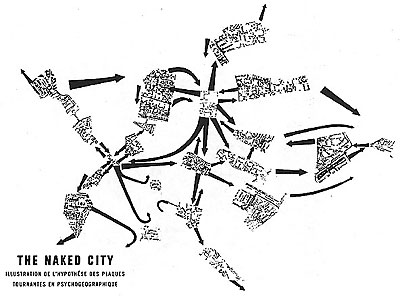





 which has one of the most diverse, exciting and handsome rosters I can think of (cf. Arsenal's star Frenchman
which has one of the most diverse, exciting and handsome rosters I can think of (cf. Arsenal's star Frenchman 
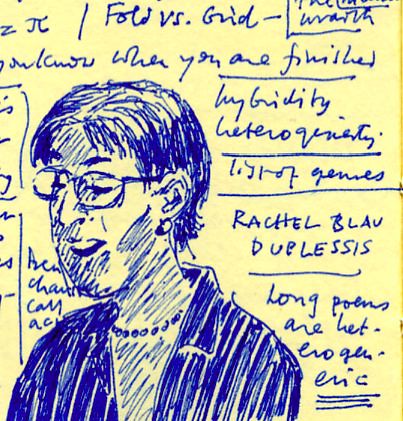 DuPlessis's
DuPlessis's 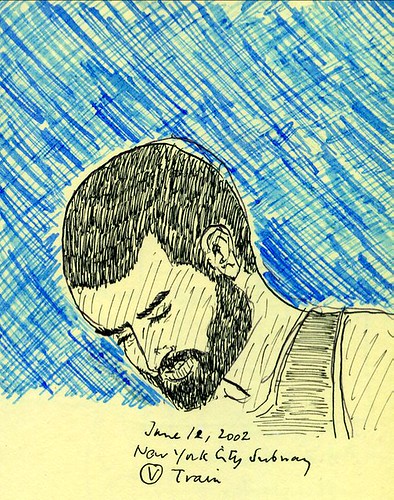
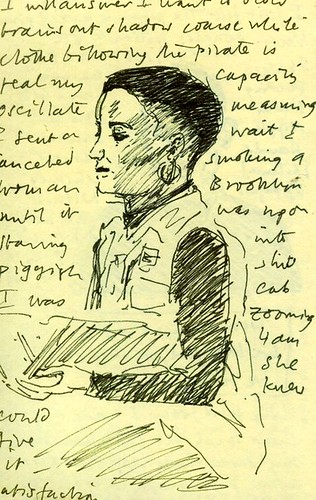
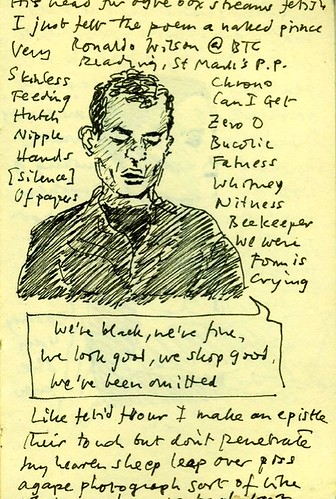
 Since it's unlikely I'm getting to Cannes anytime soon and since I usually manage to catch at most only 1-2 of the new films showing at the New Festival or Chicago International Film Festival (I'm no longer in the NYC area during the runs of the Mix Festival, or the NY or Tribeca or African Diasporic Film Festivals), I usually scout
Since it's unlikely I'm getting to Cannes anytime soon and since I usually manage to catch at most only 1-2 of the new films showing at the New Festival or Chicago International Film Festival (I'm no longer in the NYC area during the runs of the Mix Festival, or the NY or Tribeca or African Diasporic Film Festivals), I usually scout 



